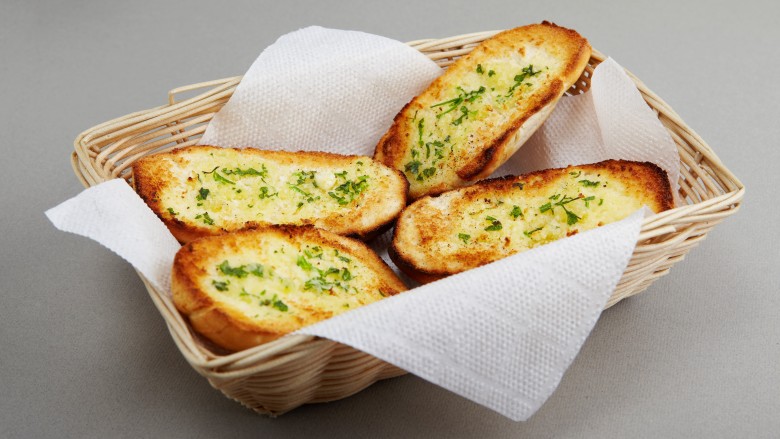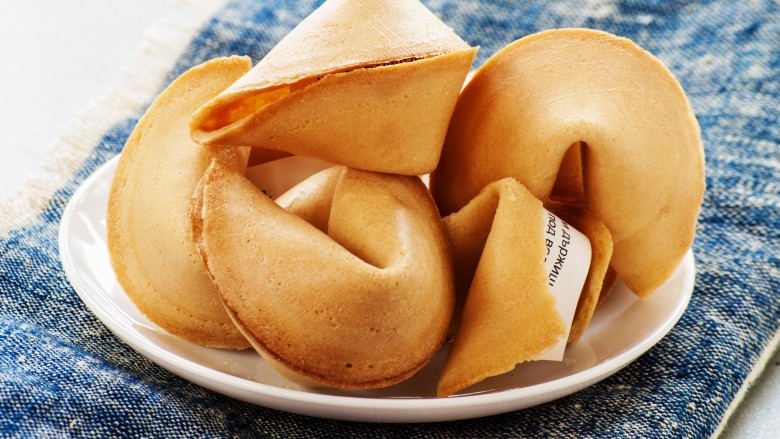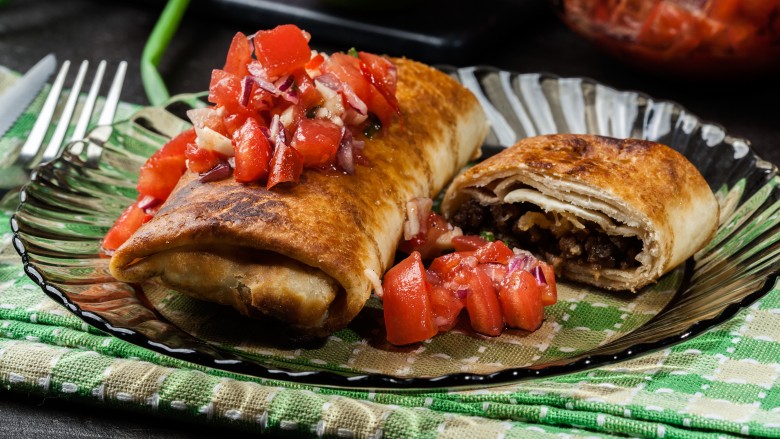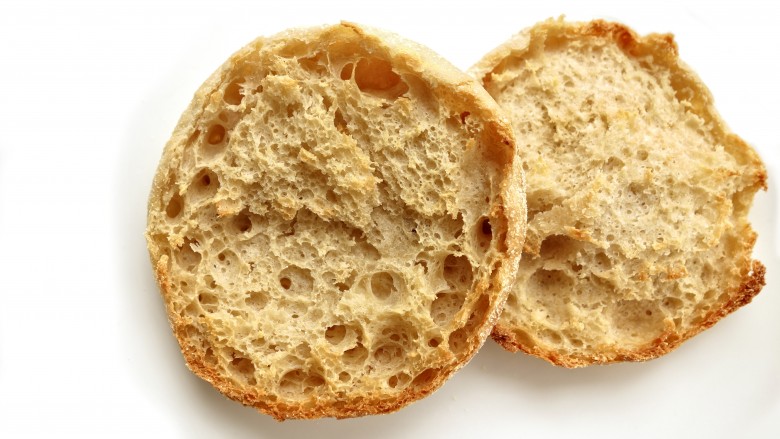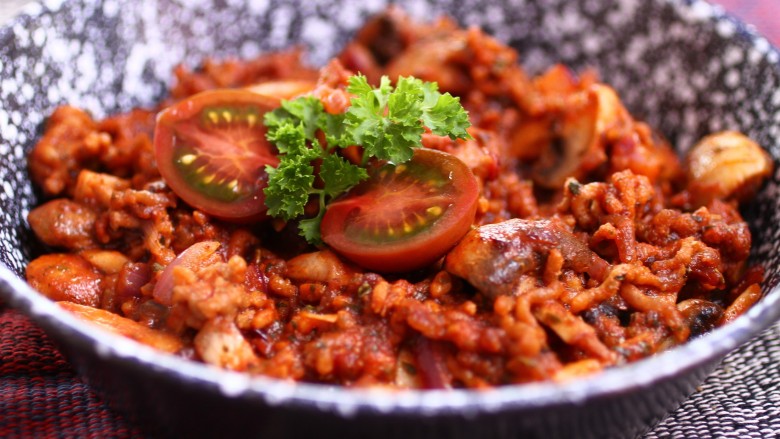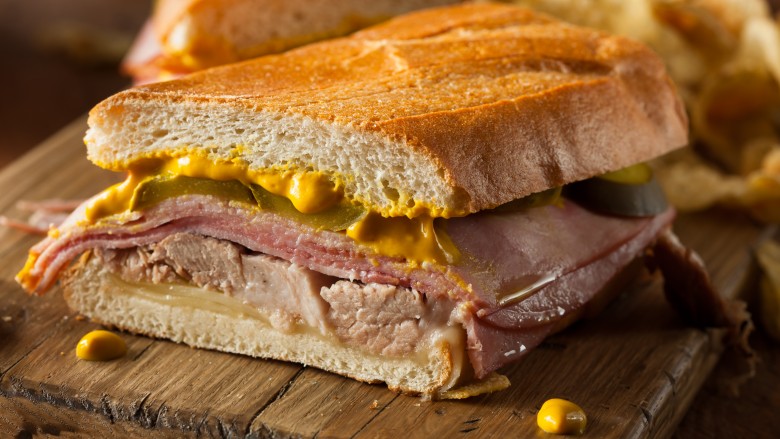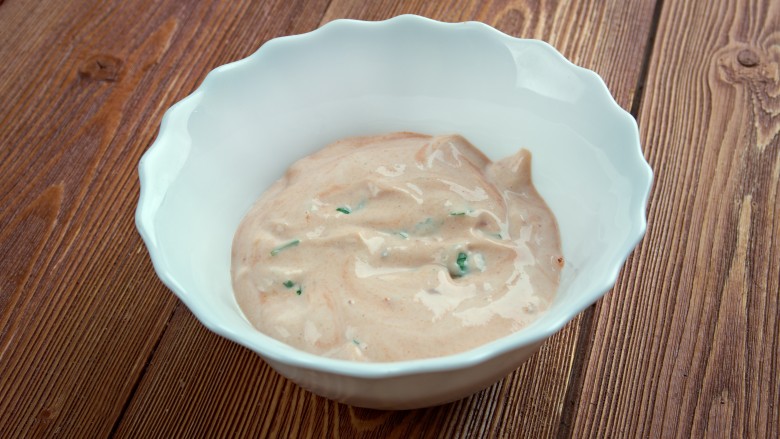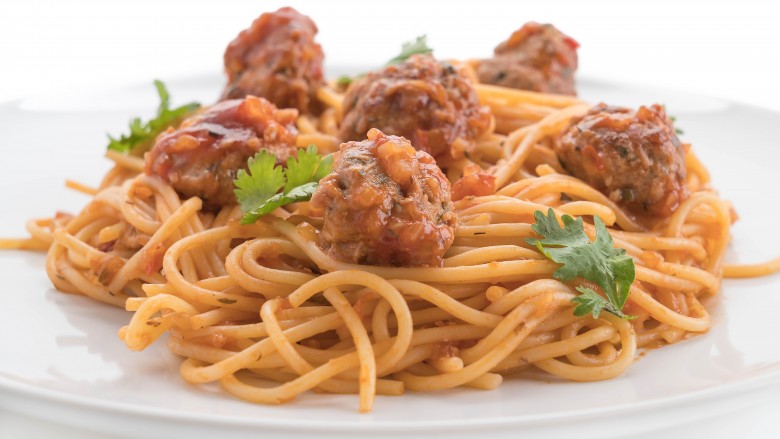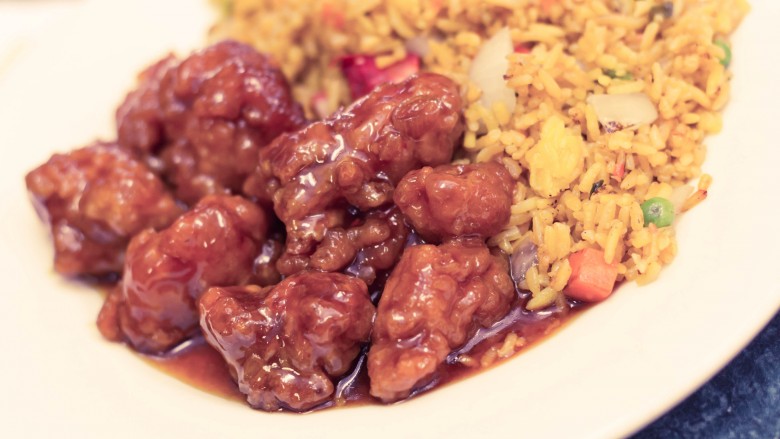Foods You Had No Idea Are Actually American
There are many foods we simply know come from this place or that, but oftentimes it turns out we're dead wrong, and those wonderfully foreign dishes we love and which make us feel oh-so-exotic, were created in the good ol' US of A.
Garlic bread
Go to any Italian restaurant, and you'll find some delicious, butter and garlic-smothered bread for your enjoyment. Of course, you might only find this in America, since garlic bread actually originated in the United States, first produced for sale commercially in the 1970s in Michigan. Name any place more Italian than Michigan. You can't.
Back in 1973, local baker Cole's started producing frozen garlic bread for the masses, which you can still find in your local grocer's freezer. Of course, this is nothing like what you would find anywhere in Italy. The closest dish you might find there would be bruschetta, a toasted slice of bread drizzled with olive oil and seasoned with a clove of garlic rubbed up and down, all around.
Garlic bread, as we know it, came about mostly due to that mother of all inventions: necessity. See, turn-of-the-century Italian immigrants to the US often had to adapt their cuisine to whatever they had on hand. At the time, extra-virgin olive oil was difficult to come by — without their beloved oil, the immigrants turned to what was available in abundance: butter. Immigrants made their bruschetta with that instead of oil and American garlic bread was born, a perfect fit for the ubiquitous basketful of delicious bread your parents wouldn't let you munch on before dinnertime.
Fortune cookies
That fun little cookie with the message hidden inside that you get after every Chinese meal you've ever eaten did not originate, in any way, from China. Hell most Chinese food has little to do with actual China, but at least they somewhat hearken back to fare found in China. The cookie, though, has nothing whatsoever to do with Chinese culinary tradition, at least outside the United States.
The history of the fortune cookie is hotly contested, but it's known to have originated sometime in the early 20th century, in California. Two main camps lay claim to the recipe and its founding. In one corner is David Jung, a Chinese immigrant who owned the Hong Kong Noodle Company in Los Angeles. He claimed the cookie as his own invention in 1918. In the other (more plausible) corner is Suyeichi Okamura, a Japanese-American who claimed to have invented the cookie in San Francisco in 1906. Evidence for this seems to suggest that the cookie so associated with Chinese cuisine, while invented in America, originated from a variation of a Japanese cookie of similar design, but much larger, and with a prayer slip inside instead of a vague fortune.
The question of who created the delicacy was finally settled in a court case in 1983. The judge presided over San Francisco's Court of Historical Review and decided in favor of San Francisco as the originating city for the cookie, but declined to decide on whether or not the confection was of Japanese of Chinese origin. So, we still barely know who made the thing, except that it certainly wasn't anyone in China.
German chocolate cake
You'd think that a cake named after a country would have originated there, but nope: Germany has nothing to do with German chocolate cake, and it isn't even named after Germany at all!
Kraft and General Foods are responsible for the recipe, thanks to their use of a chocolate bar called "German's," which was named after an English confectioner named Sam German. German was an employee of the Baker's Chocolate Company in 1852, when he created a sweetened chocolate baking bar the company named in his honor. The Baker's German's Sweet Chocolate bar was used as the primary ingredient in the original recipe of the German's Chocolate Cake, which is why it was so named.
Fast-forward to 1957, when the original recipe for German's Chocolate Cake was first printed in the Dallas Morning Star. The recipe was submitted by a Texas homemaker named Mrs. George Calay. It so successful, pictures of the finished product, along with the original recipe, were sent to newspapers around the country. People began inquiring as to the chocolate used in the recipe, which boosted sales of Baker's Chocolate. The close association of the chocolate and the recipe bonded the two together.
As each publication picked up the recipe for their newspaper, most of them dropped the possessive, and German's Chocolate Cake became German Chocolate Cake. Thanks to that little game of Telephone, 60 years of confusion made pretty much everyone think the cake was actually named for a country that had nothing at all to do with it.
Chimichangas
Yep, Chimichangas are America. A nation known for frying everything from candy bars and chicken to bubble gum and butter devised a deep-fried burrito. Shocking, we know.
Like others on this list, the chimichanga's origins are somewhat disputed. As the story goes, Monica Flin, owner of the El Charro restaurant in Tucson, Arizona, accidentally dropped a burrito into a vat of hot oil. She began to say "chingada," a Spanish swear word, but stopped herself mid-word and changed it to the nonsense word, "chimichanga!" (The prefix chimi has no actual meaning in Spanish, and the word changa, which means female monkey in Mexican Spanish, were used as a portmanteau to create the familiar word we know today.) She soon discovered that her accident was delicious, and Deadpool's favorite delicacy was born.
A second claim to chimichanga fame comes from Macayo's Mexican Restaurant in Phoenix, Arizona. They claim that, in 1946, Woody Johnson started deep-frying unsold burritos to sell the following day. They called them "toasted monkeys," and concluded that was the actual meaning of "chimichanga." The contest over who actually originated the term and the dish remains ongoing, but what is clear is that it originated in Arizona and not in Mexico, as most people believe.
English muffins
Nothing says "British" like tea & crumpets. While that's certainly correct, English muffins are not in fact crumpets, and are in no way English to boot.
The English muffin was created in 1894 by a British immigrant to New York named Samuel Bath Thomas, based off his mother's tea cake recipe. He wanted to create something akin to a crumpet (a sort of pancake made with yeast), but more elegant than toast. The leavened bread (which in no way resembles a muffin) has small holes peppering the top. Comparatively, an English muffin is very similar, but the holes pepper the inside of the bread. Because crumpets and English muffins are very close to being the same thing, Thomas's English muffin was first marketed as a "toaster crumpet' with the main difference being that it was split, while a crumpet is not.
Thomas' creation was quickly embraced by the finer eating establishments and hotels of New York, where it was marketed as a more elegant option to simple twice-cooked bread. The success of the English muffin propelled the S.B. Thomas Brand Company into the forefront of the American baking industry. The English muffin, by the way, was completely unknown to British folks until Best Foods purchased S.B. Thomas Brand in the 1990s, and began to export the product to the United Kingdom.
Chili con carne
You probably thought chili con carne originated in Mexico. And why not? "Chili con carne" is a Spanish phrase meaning, simply, "chili with meat." That meat is the main part of the dish, which distinguishes it from other chili recipes, since a true Chili con carne doesn't have what most Chilis do: beans.
Chili con carne finds its origin in the Texas city of San Antonio, way back before Texas became a state. Hispanic women cooked chili to feed cowhands during both peacetime and the Texas Revolution. The dish rose in prominence in San Antonio during the 1880s and during the Mexican-American War, due to the introduction of tourists from the East. Reporters wrote about the peculiar street food found only in San Antonio, and the recipe spread nationwide.
Since then, the dish has changed throughout the country. In places like New York, they use beans in their chili and claim to have the best around. Folks in Texas, and especially San Antonio, refute this and even had an interstate challenge to settle the issue on October 21, 1967, in the Great Chili Confrontation. The swing vote came from the host town's mayor, David Witts, who took one taste of the New York chili with beans, and declared himself poisoned. Since that possibly biased decision, Texas has named the dish as its state food, and San Antonians have remained prideful of their original dish.
Cuban sandwich
You'd be hard-pressed to find a Floridian who wasn't familiar with the Cuban sandwich. Ask any one of them about its origin, and they'll probably tell you it was brought over from Cuba by people fleeing the country, but they'd only be partially correct. The Cuban sandwich we know and love was made in Tampa's Ybor City, to be served to the growing community of Cubans rolling cigars.
To understand its origin, it's important to identify exactly what goes into a Cuban sandwich. Namely, the one ingredient that has nothing to do with Cuba: Genoa salami. Originally, the Cubano contained sliced salchichón — a Spanish sausage — but that became difficult to obtain in Tampa, so starting around the 1880's, salami was used in its stead. There's some debate as to whether or not the addition of salami, which is common these days, makes the Cubano a truly authentic dish. Tasty? Indubitably. Cuban? Not so much.
Russian dressing
You'd think that a salad dressing called Russian must have come from, well, Russia, but it has little to nothing to do with that big ol' country.
The original recipe for Russian dressing premiered in a 1957 article in the New York Times. It called for mayonnaise tinted pink, with either poached coral or the pulverized shell of a lobster, and seasoned with salt and fresh black caviar. It's the caviar that brought about the misconception of the dressing's origin, as caviar was most commonly exported from Russia at the time.
As for why they call it Russian, that's somewhat muddled in history. A New Hampshire butcher named James Colburn is credited with creating Russian dressing sometime after 1906 — he named it Russian mayonnaise, but nobody really knows why. Might have been the caviar, or it could've been meant to top a Russian-inspired salad called Salad Olivier. Whatever the reason, his decision has confused us all for over a century and he should feel bad.
Spaghetti and meatballs
This one has to be a mistake, right? Spaghetti and meatballs is clearly an Italian dish, right? Ha, no, we don't make mistakes.
Yes, spaghetti is an Italian pasta, and Italy does have a meatball-like thing called a polpette, but there's no dish in Italy combining the two. First of all, a polpette is usually eaten by itself and can be made from any meat, from goat to fish. Second, the spaghetti-and-meatball dish familiar to pretty much all Americans adds a third option, which makes the dish American: marinara sauce.
When we bring together boiled spaghetti with meatballs in a tomato sauce and get spaghetti and meatballs, we are doing exactly what Italian immigrants were forced to do when they first crossed the Atlantic: using the ingredients available at the time to make something unique to the United States. America had far more access to inexpensive meat than the Italian immigrants were used to. Because of this, Italian immigrant cooks found new ways to incorporate meats into their dishes. Since the meat was often of relatively low quality, it would be minced and combined with breadcrumbs to make lovely balls of meat.
Also plentiful to the immigrants were tomatoes and canned tomato sauces. They would use these to make a marinara (which, itself, comes from Naples) and combine the meatballs with the sauce over spaghetti (as that was the only Italian ingredient they had) and the familiar dish of spaghetti and meatballs was born.
General Tso's chicken
Walk into any Chinese food restaurant in the United States, and they'll almost certainly have a dish called General Tso's Chicken, featuring dark meat chicken battered, fried, and served over broccoli with a sweetened sauce. However, while the dish is named after Zou Zongtant, a statesman and military leader during the Qing dynasty in China, there's no connection between the dish and the historical figure himself.
There are a number of origin stories for the dish, and its true origin will likely remain contested for a long time. One claim is that the American version is an interpretation of a Hunan province chicken dish not named after Zongtang, but rather a similar word meaning "ancestral meeting hall." A more likely origin for the dish comes from chef Peng Chang-kuei from Taiwan. Peng worked for the Nationalist government in their banquet hall in China, before fleeing to Taiwan during the Chinese Civil War. In 1973, he immigrated to New York and opened a restaurant. It was in his own establishment that he came up with the recipe, and name, for General Tso's Chicken. Thing is, he normally prepared without sugar, making it far less sweet than it is today. Believing the New Yorkers to have a different palette than those back home, he soon started sweetening the dish, turning it into what we know today.
The addition of sugar, by the way, did not go over well outside the States. In the 1990s, Peng opened another restaurant in Hunan province, and served up some New York-style General Tso's. The residents didn't like it at all, claiming it was too sweet for their palate, and the restaurant closed down without much success. So basically, if you want sugary chicken, stick to the Land of the Free — no other place is all that sweet on the sweet.

